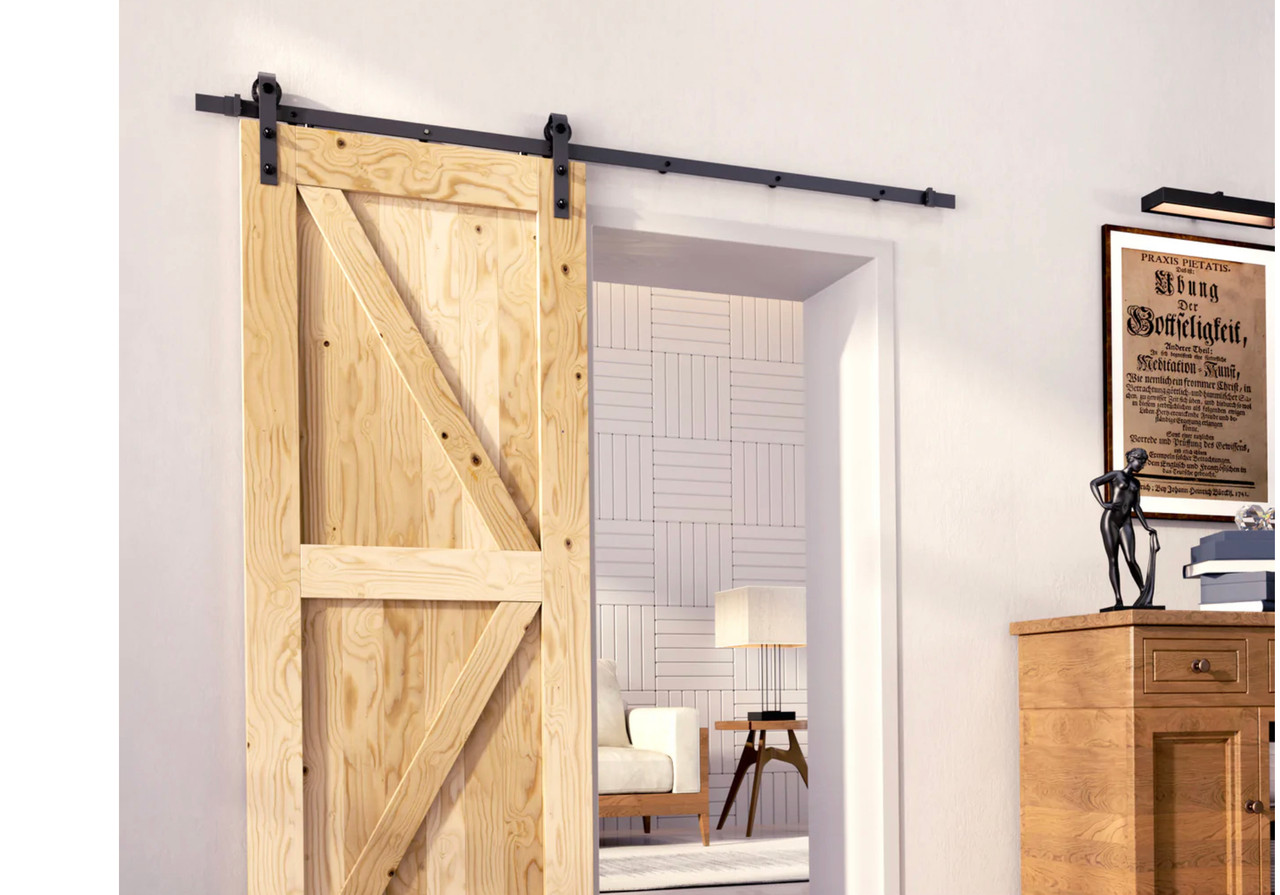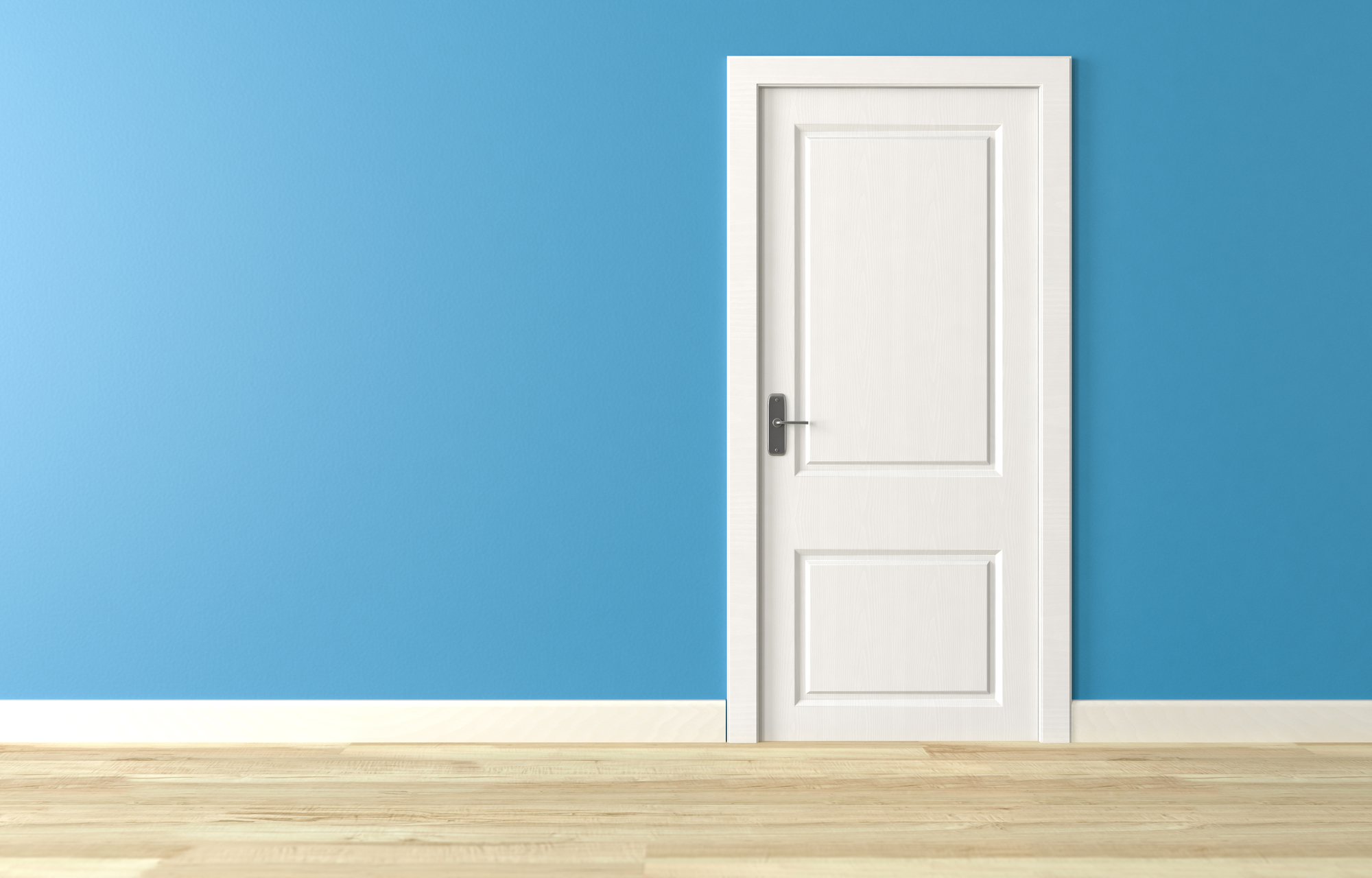Barn Door vs. Regular Door: Finding the Right Way In
Posted by The Barn Door Hardware Store on Mar 1st 2024
Barn doors have been an unexpected yet welcomed addition to the interior design trends of recent years.
Designers and homeowners from all around the world have fallen in love with its practicality and rustic charm. They have even grown to be a highly desirable alternative to regular doors!
Knowing the differences between barn doors and regular doors can help you make an informed decision on which door is the better option for your space.
This article is designed to provide you with everything you need to know about barn doors vs. regular doors. We’ll equip you with valuable insights into their pros, cons, types, styles, and cost differences.
Let’s get started!
Barn Doors

As the name suggests, barn doors were originally used in barns but have made an immense transition to commercial and residential interiors in recent years because of their rustic elegance.
Unlike regular doors, these doors are mounted on a sliding track above a door frame. From glass to natural wood, barn doors are available in a variety of materials and styles.
Advantages of barn doors
Sliding barn doors are a great way to add style, functionality, and personality to your space. Let’s take a closer at the most significant benefits that a barn door can bring to your home:
Space-Saving
One of the biggest reasons why barn doors are so widely sought-after is their ability to fit into small rooms.
Unlike conventional doors, they slide neatly out of the way and make it easy to move from one space to the next.
Stylish
Barn doors come in a variety of designs and can easily fit any aesthetic that suits your particular tastes.
These doors are most known to be used in industrial interiors that incorporate tons of rustic furniture and decor.
Easy to Install
Compared to traditional doors that can be difficult to maneuver into pre-cut doorways, barn doors can easily be installed on your own or with the help of a professional.
The best part is that once the barn door hardware is installed, you can effortlessly change out the doors later.
Disadvantages of barn doors
Barn doors provide a comfortable flow from one room to another in ways that conventional doors cannot. However, barn doors can also come with a few downsides that you need to consider:
Not Good at Sound Dampening
When fully closed, standard doors completely fill out openings that barn doors do not.
Since barn doors merely cover the outline of a doorway, they do not have the same kind of sound-dampening qualities that regular latch doors provide.
Won't Stay Closed If Unleveled
Sliding barn doors that are not slid shut at the right angle won't stay put. They can be difficult to latch and can slide from one inch or open all the way if you are not careful.
Can Be Loud
Some sliding barn doors can be loud when they are open and shut. Depending on the hardware, the sound of a sliding barn door can resemble the rumbling of thunder.
Types of barn doors
Each barn door type has its own set of unique functions and advantages. With so many types of barn doors to select from, you’re sure to find the perfect style to match your interiors:
- Wood Barn Doors - Wood barn doors are traditional-style barn doors and are some of the most popular options on the market. Since wood is a universal design element, it can suit almost any home style.
- Metal Barn Doors - Metal barn doors have become increasingly desirable in recent years due to their sleek elegance. Whether your home design is industrial, contemporary, or minimalist, metal barn doors have a timeless quality that can match.
- Glass Barn Doors - Glass barn doors are a magnificent addition to any home. One of its most significant advantages is that it can open up your space while still creating separation and privacy.
- Mirror Barn Doors - If you’ve ever needed more space in your closet, bathroom, or bedroom to include a full-length mirror, there are several barn door styles that can feature one. Mirror barn doors can serve as a full-length mirror while also saving you more wall space.
- Double Barn Doors - Double barn doors are essentially two separate barn doors on a single track. They are the ideal choice if you have a large space that lacks privacy or style.
- Bypassing Barn Doors - Bypassing barn doors are your best bet if you are looking for an alternative to double barn doors that can save you more space. As opposed to double barn doors, bypassing barn doors overlap on top of each other instead of resting on either side of the track.
- Bifolding Barn Doors - Bifolding barn doors are an excellent addition to your home if you are looking for a functional and timeless design. This type of barn door folds in on itself and protrudes out from the track when closed.
- Barn Door Cabinets - Barn door cabinets are perfect for creating a rustic look similar to farmhouse chic interiors. They function similarly to regular-sized barn doors but require special mini hardware for proper installation.
- Exterior Barn Doors - There is a wide array of specialty-designed outdoor barn doors that are built to last and ready for the elements. They are typically made with strong wood and various finishes.
Best use cases for barn doors
Barn doors can be used as a stylish entrance to a closet, home office, laundry room, and many more. Sliding barn doors are also one of the most effective ways to maximize space in a small bathroom.
Typical cost
New barn doors can be some of the most expensive types of doors to install.
They cost an average of $1,800 and prices can range anywhere from $1,350 to $5,000.
Regular Doors

Standard or regular doors are basically doors that swing in one direction to close and open.
They have the simplest designs and are affordable, which makes them a highly popular choice for a wide variety of applications. They are usually solid in form but may also be available in hollow-core or lightweight form.
Advantages of regular doors
Regular doors can easily blend into most room designs and are the go-to choice if you want a simple door for your space. Let’s take a look at some of the most notable benefits that standard doors can offer:
Versatility
Regular doors are made in different shapes and sizes that can fit any particular space. They can also be customized with various accessories like glazed viewing windows, fixings, and locks.
Functionality
When it comes to applications, regular doors can be used for kitchens, closets, bathrooms, bedrooms, laundry rooms, and many more due to their ease of use.
You can leave them constantly open or closed and they are highly adaptable to match the design you need.
Safety and Security
Standard doors are ideal for both exterior and interior usage. Depending on the style, they can emit a professional look that provides durability and security for residential or commercial buildings.
Disadvantages of regular doors
While regular doors offer a multitude of benefits, they can also come with potential drawbacks that you need to keep in mind:
Require Extra Maintenance
Standard doors will need regular maintenance to keep them in their best condition. If you want to keep your door looking great all the time or want to prevent any costly repairs, conducting routine maintenance measures can go a long way.
Can Be Expensive Depending on the Materials
The cost of high-quality hardwood or timber can be very expensive for regular doors. If you opt for a premium door, that will last longer then you will end up spending more money.
Thin Doors Have Limited Customization
Regular doors that are hollow-core and made of cardboard-like materials are impossible to sand down to remove the existing exterior and refinish. They are also much more difficult to paint because the existing paint does not allow for adequate adhesion.
Types of regular doors
Depending on the manufacturing and the material used, each type of standard door has its own set of main features and merits:
- Timber Wood Doors - Timber wood doors are the prevalent mainstay in the manufacturing of standard doors. Its biggest benefits are its simplicity and local availability.
- Ledged Doors - Ledged doors are one of the oldest and easiest types of doors to use. Ledged entryways can either be braced or braced and framed for more strength and better appearance.
- Paneled Doors - Paneled doors are mostly common in homes. The door’s frame is made of wood and shutter panels with plywood, timber, hardboard, and pieceboard.
- Flush Doors - A flush door is a totally smooth door with medium-density fiberboard or plywood over a relatively light timber frame. Its hollow core is typically filled with a cardboard material.
- Glass Doors - Glass is more generally used in the paneling of doors. However, certain locations such as the backside of the house can be made out of glass completely to give an unobstructed view of the garden.
- Steel Doors - Steel is one of the most durable choices for both interior and exterior doors. These steel entryways can either be solid or hollow.
- PVC Doors - PVS, or Poly Vinyl Chloride, is essentially a type of plastic that is utilized in making items such as funnels, water tanks, or fittings for houses. The use of PVC as a material in door manufacturing has rapidly risen in popularity with a vast assortment of designs and colors.
- Fiberglass Doors - Fiberglass is a type of glass that is solid, non-combustible, lights, and has high rigidity. Fiberglass doors are easily accessible and have qualities that can match and design style.
- Aluminum Doors - Aluminum is a metal that has a great number of applications due to its lightness. Aluminum frames for regular doors provide the benefit of resisting tough weather conditions.
Best use cases for regular doors
Regular or conventional doors are a good option for spaces that need insulation against dust, heat, and noise. With a variety of colors and designs, they can be used for both commercial and residential purposes.
Typical cost
Factors such as material and labor can determine the overall cost of a regular door. Hollow-core doors can cost anywhere from $40 to $400, while solid wood doors can cost around $200 to $900.
Making the Choice
Depending on what you need, a new door can cost hundreds to thousands of dollars. Here are some of the most crucial considerations you need to take note of when choosing between barn doors and regular doors:
- Consider your priorities: Space requirements, practicality, soundproofing, convenience, and functionality are the most important factors that will help you determine the ideal option for your space.
- Match the style of your home: Rustic themes favor barn doors, while regular doors can be a better fit for modern interiors.
- Budget and DIY skills: Door installation can be done by yourself or with a professional. While barn doors need a track installed, regular doors may require a new door frame.
- Cost: Making the right choice between a barn door and a regular door is about the value you receive from your investment. Barn doors can cost much more but also provide unique advantages and serve as a better quality door.
 FREE SHIPPING ON ALL US ORDERS
FREE SHIPPING ON ALL US ORDERS